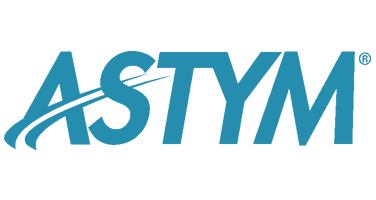Tennis Elbow and Golfer’s Elbow: Advice from the Experts
As summer gets into full swing, many of you may be returning to the golf course and tennis courts for the first time since last season. Hopefully, the winter layoff didn’t hurt your game too much! Tennis and golf are known to place increased stress on the elbow and lead to irritation of the tendons around the elbow. These conditions are commonly called “tennis elbow” and “golfer’s elbow”. A gradual increase in your activity level and a focus on proper technique can help prevent these injuries from occurring. Proper warm up and stretching the forearm muscles also help with prevention and can be a great place to start treatment if you do begin to have pain. Rest, ice, and an anti-inflammatory medication help reduce symptoms in the early stages of an injury, but have limited effectiveness as the injury progresses. It was previously thought that the pain associated with chronic tendon pain or “chronic tendonitis” such as tennis elbow, was due to inflammation. However, recent research has shown the tendon to have very little, if any inflammation. Instead, repetitive stress on the tendon causes an over development of scar tissue which effectively weakens the tendon. This is important when we consider the best treatment approach. While rest, ice, and anti-inflammatory medication may initially reduce the pain, they don’t necessarily address the root cause of the injury. The most effective treatment will help stimulate the tendon to remodel itself and get stronger. A type of strengthening exercise called eccentric exercise has been shown to be very effective at stimulating tendons to remodel and become stronger leading to a reduction in pain. Eccentric exercise involves slowly lowering a weight against resistance so that the muscle is engaged while it is lengthening. Your physical therapist can show you how to perform these exercises. Recently, a specific physical therapy approach called Astym has been found to reduce or eliminate any scar tissue that has resulted from the chronic irritation of the tendon and also help stimulate the regeneration and remodeling of the tendon. In addition to treating the tendon directly, it is also important to consider other factors that may be contributing to the tendon pain. Two common factors include tightness or “trigger points” in the forearm muscles and stiffness in the joints of the neck and arm. The forearm tightness can be addressed with stretching, massage, and trigger point dry needling, while the elbow joint pain can be treated with “hands on” treatment called manipulation. Additionally, recent clinical trials have shown that treatment of the neck with gentle mobilization or manipulation can reduce the pain associated with tennis elbow. Treating the upper back and neck can relieve tension on the nerves that go to the elbow thereby helping reduce pain. Corticosteroid injections are also commonly given for tennis elbow. However, a recent study compared the effectiveness of a steroid injection, physical therapy, and a “wait and see” approach. Physical therapy treatment included the eccentric exercise and elbow mobilization mentioned previously. The results showed individuals who got the steroid injection did only slightly better than the other two groups during the first 6 weeks. However, after one year, the group that got the steroid injection had a higher recurrence rate of tennis elbow than either of the other two groups. Those who received the cortisone injection did even worse than the “wait and see” group who had no interventions after one year. Although an injection may provide short term relief, it may do more harm than good long term. So if you or someone you know is suffering from elbow pain whether it is from tennis, golf, or gardening, remember a comprehensive treatment approach will give you the best chance of getting back to the activities you love quickly and prevent them from returning. Dr. Tim Flynn and Dr. Terry Gebhardt are physical therapists and owners of Colorado Physical Therapy Specialists in Fort Collins, Colorado; you can find more information about their clinic here. Meet today's guest bloggers: Dr. Timothy W. Flynn, PT, PhD
Dr. Flynn is board certified in Orthopaedic Physical Therapy (OCS), a Fellow of the American Academy of Orthopaedic Manual Physical Therapists (FAAOMPT), and a frequent research presenter at state, national, and international meetings. Dr. Flynn is widely published including 5 textbooks, 6 book chapters, over 50 peer-reviewed manuscripts on orthopaedics, biomechanics, and manual therapy issues. He was the editor and author of The Thoracic Spine and Ribcage - Musculoskeletal Evaluation & Treatment and The Users' Guides to the Musculoskeletal Examination, and the author of 3 educational CD-ROMs on Orthopaedic Manual Physical Therapy. Dr. Flynn has received numerous research grants. Awards include the James A. Gould Excellence in Teaching Orthopaedic Physical Therapy, the Steven J. Rose Excellence in Research (twice), the AAOMPT Outstanding Research Award (twice), and the Distinguished Alumnus- Marquette University Program in Physical Therapy. Dr. Flynn continues to maintain an active research agenda in the areas of spinal and extremity manipulation, low back disorders, characterization of spinal instability, and the development of clinical prediction rules.
Dr. Flynn is an expert clinician who is dedicated to providing the highest quality care possible. His primary clientele is made up of individuals suffering from low back pain, chronic spinal disorders, failed back surgeries, and chronic pain disorders. Dr. Flynn's clinical expertise is frequently sought by national and international clients. He is on the executive board of Evidence in Motion an education and practice consultation company which passionately promotes a culture of evidence-based practice within the physical therapy profession. Dr. Flynn is the immediate past President of the American Academy of Orthopaedic Manual Physical Therapists, an Associate Editor for the Journal of Orthopaedic & Sports Physical Therapy (JOSPT), and editorial board member of Manual Therapy. He is a Distinguished Professor of Physical Therapy at Rocky Mountain University of Health Professions where he teaches professional and post-professional students in the area of musculoskeletal management, advanced manipulation skills, and evidence-based practice.
Dr. Timothy W. Flynn, PT, PhD
Dr. Flynn is board certified in Orthopaedic Physical Therapy (OCS), a Fellow of the American Academy of Orthopaedic Manual Physical Therapists (FAAOMPT), and a frequent research presenter at state, national, and international meetings. Dr. Flynn is widely published including 5 textbooks, 6 book chapters, over 50 peer-reviewed manuscripts on orthopaedics, biomechanics, and manual therapy issues. He was the editor and author of The Thoracic Spine and Ribcage - Musculoskeletal Evaluation & Treatment and The Users' Guides to the Musculoskeletal Examination, and the author of 3 educational CD-ROMs on Orthopaedic Manual Physical Therapy. Dr. Flynn has received numerous research grants. Awards include the James A. Gould Excellence in Teaching Orthopaedic Physical Therapy, the Steven J. Rose Excellence in Research (twice), the AAOMPT Outstanding Research Award (twice), and the Distinguished Alumnus- Marquette University Program in Physical Therapy. Dr. Flynn continues to maintain an active research agenda in the areas of spinal and extremity manipulation, low back disorders, characterization of spinal instability, and the development of clinical prediction rules.
Dr. Flynn is an expert clinician who is dedicated to providing the highest quality care possible. His primary clientele is made up of individuals suffering from low back pain, chronic spinal disorders, failed back surgeries, and chronic pain disorders. Dr. Flynn's clinical expertise is frequently sought by national and international clients. He is on the executive board of Evidence in Motion an education and practice consultation company which passionately promotes a culture of evidence-based practice within the physical therapy profession. Dr. Flynn is the immediate past President of the American Academy of Orthopaedic Manual Physical Therapists, an Associate Editor for the Journal of Orthopaedic & Sports Physical Therapy (JOSPT), and editorial board member of Manual Therapy. He is a Distinguished Professor of Physical Therapy at Rocky Mountain University of Health Professions where he teaches professional and post-professional students in the area of musculoskeletal management, advanced manipulation skills, and evidence-based practice.
 Dr. Terry Gebhardt, PT, DPT
Dr. Gebhardt completed his Master of Physical Therapy at the U.S. Army-Baylor University Graduate Program in 1998. During Dr. Gebhardt's 7 years of physical therapy practice in the Army he specialized in treating a broad range of musculoskeletal injuries. He has worked extensively with injury prevention initiatives and has been a leader in the development of training programs designed to maximize fitness while preventing injury. Dr. Gebhardt relocated to Colorado in 2004 to complete his Doctorate of Physical Therapy degree and Fellowship in Manual Therapy at Regis University. His areas of clinical expertise and interest include spine and sports rehabilitation where he incorporates his passion for fitness with physical therapy.
Dr. Gebhardt is an avid back country skier and ultramarathoner. He is a member of the American Physical Therapy Association (APTA), American Academy of Orthopaedic Manual Physical Therapists (AAOMPT) and a Certified Strength and Conditioning Specialist (CSCS). He has also published research in the Journal of Orthopaedic and Sports Physical Therapy and is currently active in clinical research.
Dr. Terry Gebhardt, PT, DPT
Dr. Gebhardt completed his Master of Physical Therapy at the U.S. Army-Baylor University Graduate Program in 1998. During Dr. Gebhardt's 7 years of physical therapy practice in the Army he specialized in treating a broad range of musculoskeletal injuries. He has worked extensively with injury prevention initiatives and has been a leader in the development of training programs designed to maximize fitness while preventing injury. Dr. Gebhardt relocated to Colorado in 2004 to complete his Doctorate of Physical Therapy degree and Fellowship in Manual Therapy at Regis University. His areas of clinical expertise and interest include spine and sports rehabilitation where he incorporates his passion for fitness with physical therapy.
Dr. Gebhardt is an avid back country skier and ultramarathoner. He is a member of the American Physical Therapy Association (APTA), American Academy of Orthopaedic Manual Physical Therapists (AAOMPT) and a Certified Strength and Conditioning Specialist (CSCS). He has also published research in the Journal of Orthopaedic and Sports Physical Therapy and is currently active in clinical research. 




